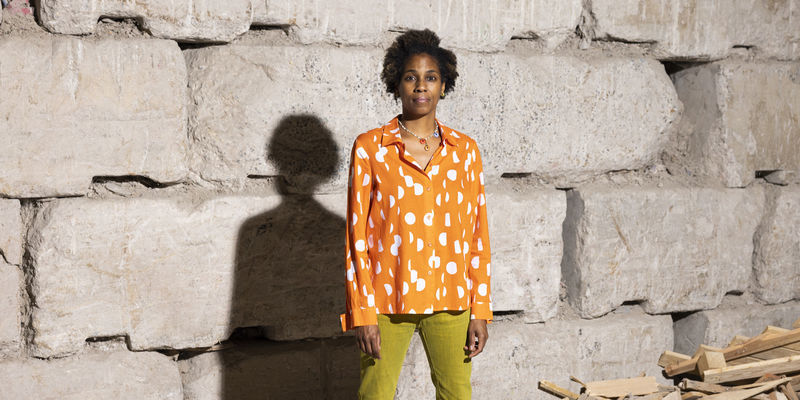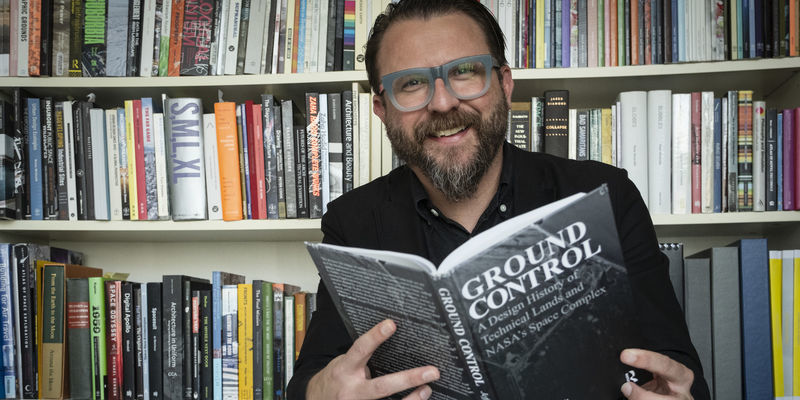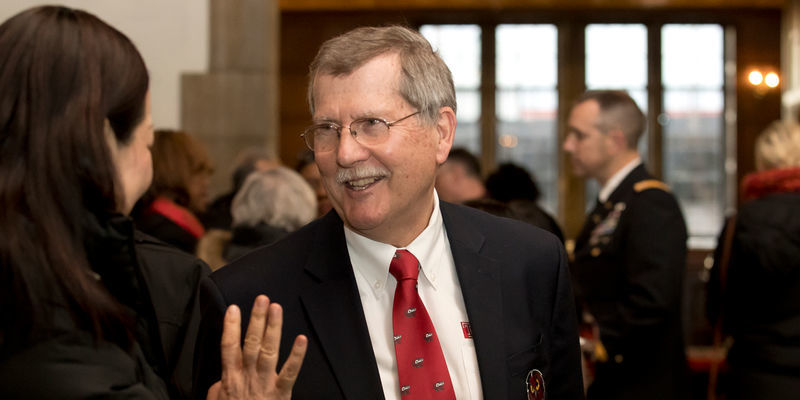Tyler’s glass program celebrates 50 years and a new, sustainable approach
The Tyler glass program was founded in 1974 by Jon Clark. In the 50 years since, it has grown into a global powerhouse, boasting a state-of-the-art facility and a long list of successful alumni artists and educators.

State-of-the-art facilities and faculty
The program operated out of a garage in Elkins Park until 2009, when it moved into its current state-of-the-art studio on Main Campus. Today, the facility is home to three large furnaces; 16 annealers used to gradually cool hot glass; five flameworking stations; four glory holes for reheating glass between steps; a dedicated kiln room; a cold shop for working with cooled glass; and a dedicated studio for undergraduate glass majors that features a critique room, a smart classroom and a neon studio.
“The facilities are a big part of the reason why Tyler’s glass program is able to produce nationally ranked exhibiting artists, practitioners and educators,” said John Dillard, who earned his MFA from the glass program in March, and added that Tyler glass alumni are now running programs at places like Tulane University, the University of Louisville, Alfred University and Virginia Commonwealth University.
“The glass program spoils you in a way, because you don’t realize until you leave that you’ve been given access to the best facilities you could ask for,” added Gemma Hollister, a 2021 graduate of the program who recently competed on the Netflix glassblowing competition show Blown Away.
Students in the program learn from faculty who are specialists around the world in their respective glass processes and techniques. The faculty roster includes Judith Schaechter, a world-renowned stained-glass artist; Stephanie Lifshutz, an expert in neon glass; Amber Cowan, a well-known glass sculptor on the East Coast specializing in recycled, upcycled and second-life American pressed glass; Kristin Neville Taylor, a multidisciplinary artist who recently received a Pew Fellowship in the Arts grant; and Sharyn O’Mara, former head of the glass program, current head of sculpture program and director of graduate studies.
“Every single one of our faculty, even if they’re emerging artists, are uniquely qualified, getting recognition, and leading the field with their research and process,” said Jessica Jane Julius, head of the glass program and associate professor of glass. Julius boasts more than 20 years of experience as an artist and educator. Her mixed media works have been displayed at the Philadelphia Museum of Art, the Museum of Glass in Tacoma, the Traver Gallery, the Heller Gallery and the Museum of American Glass in New Jersey.
The program also regularly ranks as one of the top glass programs in the country according to U.S. News & World Report, and its master of fine arts program is currently ranked number two in the nation.
A new, sustainable approach
Many glass studios today, including Tyler’s 10,000 square-foot facility, order commercially produced glass, which they melt down, add color to and mold into glass pieces. That process creates waste, and studios often end up throwing out hundreds of pounds of glass, if not more, every year. Tyler’s studio, however, is committed to a recycling process that produces zero glass waste.
When Julius took over as head of the program in 2019, she brought with her an emphasis on sustainability. Prior to her role at Temple, Julius served as president of the International Glass Art Society, where she was involved in global conversations about the glass industry’s impact on climate change.
“If we’re introducing students to a material in one of the best facilities in the world, it can be difficult for them to continue after they graduate and move on,” said Julius, who graduated from Tyler in 2003. “It is important to showcase various ways of thinking sustainably, like using sustainable practices and sourcing sustainable materials. It not only saves money, but it’s an ethical decision.”
In 2022, Julius received a Green Grant from Temple’s Department of Sustainability, which she used to purchase a scale and a glass crusher. Her goal was to no longer throw out glass waste. Instead, she wanted to crush all wasted glass to remelt and make it available for students and faculty. She also wanted to weigh every ounce of recovered glass and use that data to inform decisions about how the program operates.
The new process, called the recovery waste stream, debuted in the spring 2023 semester. After one year, the program has recovered more than 6,000 lbs. of used glass. Most of that glass gets remelted in one of the studio’s three large furnaces, and faculty then use this recovered glass to teach new students.
“When you’re first teaching students to work with glass, they make so many mistakes that create a lot of wasted glass,” Dillard said. “Now we’re able to recuperate some of the money we’d use to order new glass, and we’re doing less damage to the environment.”
Dillard was awarded a Graduate Research Award Sustainability Program (GRASP) grant from the Office of Sustainability in 2023. He used the funds to purchase a small furnace capable of melting between 10 and 50 lbs. of glass (as opposed to the 500 to 700 lbs. that the studio’s main furnaces are capable of melting).
Dillard used the small furnace to test different strategies for melting recovered glass, like melting different glass types, playing with the properties of the glass to make it more suitable for sculpting and glassblowing, and adding dyes to create new colors. He and Julius used the results from these smaller-scale experiments to develop and implement techniques to use in the big furnaces.
Preparing students for the future of glass, while celebrating the program’s roots
As Julius looks forward to the program’s future, she finds herself focusing on the problems artists commonly deal with today. That is why she not only introduced sustainability concepts into the program’s operations but has also worked to introduce new coursework that is centered on sustainability.
It’s also why she recently conducted an accessibility audit and continuously works to make the Tyler glass studio welcoming and accommodating to all artists.
As the program celebrates its 50th anniversary, Julius can’t help but celebrate the program’s beginning. The glass world has enjoyed the privileges that come with growth, like being able to order commercially produced clear glass, and Julius says many artists are shifting toward a more pure aesthetic as a result.
But Julius sees the value in recovering unpure, used glass, much like Clark saw the value in melting marbles and Pepsi bottles.
“We’re breaking that shift, and we’re revisiting our origins,” Julius said. “We’re reinstilling the drive that Clark and those original students had.”


